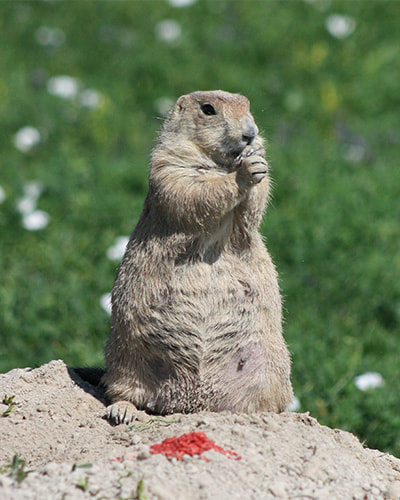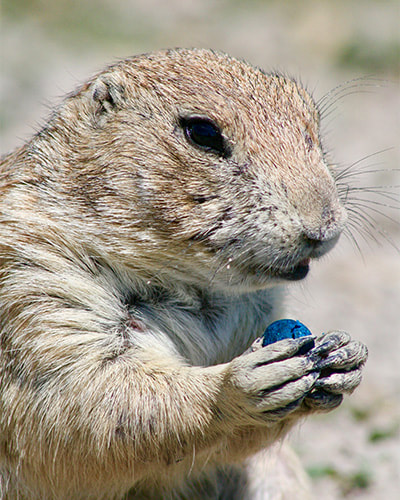|
Assembling a safe and effective toolbox for integrated plague mitigation and wildlife conservation
February 1, 2023
Project Collaborators:
U.S. Geological Survey Prairie Wildlife Research National Park Service U.S. Forest Service U.S. Fish and Wildlife Service Centers for Disease Control and Prevention World Wildlife Fund Lower Brule Sioux Tribe Arizona Game and Fish Department Colorado State University Turner Endangered Species Fund U.S. Department of Agriculture-APHIS |
Plague is a highly lethal disease of mammalian hosts and flea vectors. The causative agent, Yersinia pestis, was introduced to California in 1900 and spread rapidly to 17 western States. In the grasslands of western North America, Y. pestis poses one of the most significant biological challenges to the conservation of black-footed ferrets (BFF) and prairie dogs (PDs). The pathogen infects mammals of >70 genera and >200 species globally. In populations of colonial, burrowing PDs, plague can erupt during occasional epizootic outbreaks, thereby increasing the risk of transmission to BFFs, eliminating their PD prey, and in some cases, transforming ecosystems. A One Health view of plague is encouraged, recognizing that human, animal, and environmental health are all linked (Eads et al. 2022).
U.S. Fish and Wildlife Service (FWS) and colleagues seek to acquire a deeper understanding of plague, and to identify management tools to safely and effectively mitigate the disease. Most commonly in the context of BFF conservation, biologists manage plague using “pulicides” for flea control, including deltamethrin powder, which is infused into PD burrows. Deltamethrin dust has been a mainstay of BFF conservation for decades. That said, experiments conducted by the U.S. Geological Survey (USGS) and many collaborators has demonstrated, fleas can develop resistance to deltamethrin after repeated annual applications (Eads et al. 2018). Moreover, deltamethrin may have unintended, negative impacts on some non-target species (e.g., burrow-dwelling crickets). Therefore, additional tools are needed.
U.S. Fish and Wildlife Service (FWS) and colleagues seek to acquire a deeper understanding of plague, and to identify management tools to safely and effectively mitigate the disease. Most commonly in the context of BFF conservation, biologists manage plague using “pulicides” for flea control, including deltamethrin powder, which is infused into PD burrows. Deltamethrin dust has been a mainstay of BFF conservation for decades. That said, experiments conducted by the U.S. Geological Survey (USGS) and many collaborators has demonstrated, fleas can develop resistance to deltamethrin after repeated annual applications (Eads et al. 2018). Moreover, deltamethrin may have unintended, negative impacts on some non-target species (e.g., burrow-dwelling crickets). Therefore, additional tools are needed.



